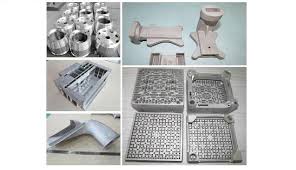Search

Investment Casting can be great for very complex, intricate parts that require thin walls. For common parts that do not meet those project criteria or are larger than a 100 pounds, then this is not a good solution. High costs for tooling are also an issue. The surface finish from Investment Casting does provide a huge benefit and often negates the need for secondary machining. As most of us know, machining is a major cost contributor, so this is a major boost.
The chart below depicts the advantages and disadvantages of each casting method. Check it out!
|
Green Sand Casting Method |
Investment Casting Method |
||
|
Advantages |
Disadvantages |
Advantages |
Disadvantages |
|
Lowest Cost |
Surface Finish |
Surface Finish |
Tooling Cost |
|
Ease to Change Design |
Complexity |
Less Machining (If Necessary) |
Quantities |
|
Weight Poured |
Often Requires Secondary Machining |
Design Complexity |
Longer Lead Time |
|
Lower Lead Times |
|
Thinner Walls |
Small Size Capabilities |
|
Mechanical Properties |
|
|
|
